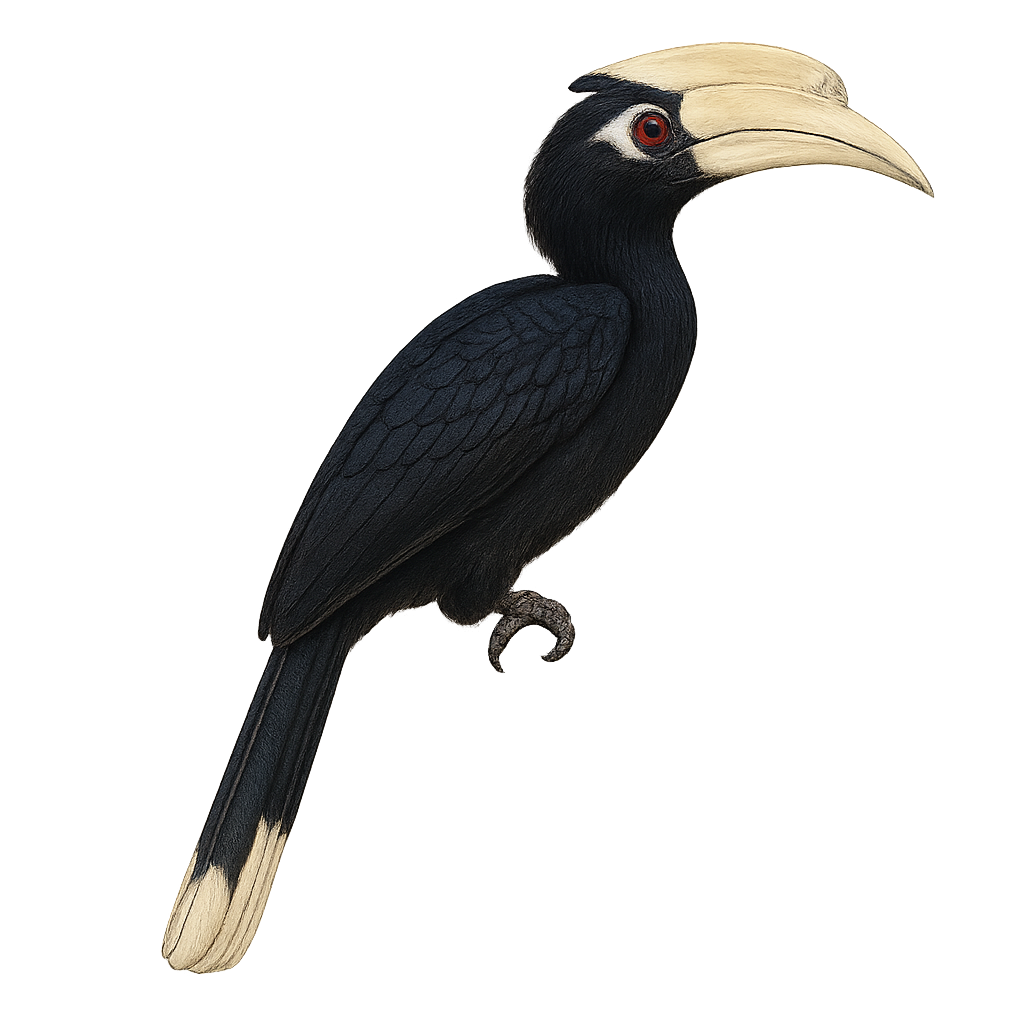Your wildlife photography guide.
Explore the black hornbill in detail, study its behavior, prepare your shots.
Where to observe and photograph the black hornbill in the wild
Learn where and when to spot the black hornbill in the wild, how to identify the species based on distinctive features, and what natural environments it inhabits. The WildlifePhotographer app offers tailored photography tips that reflect the black hornbill’s behavior, helping you capture better wildlife images. Explore the full species profile for key information including description, habitat, active periods, and approach techniques.
Black Hornbill
Scientific name: Anthracoceros malayanus

IUCN Status: Near Threatened
Family: BUCEROTIDAE
Group: Birds
Sensitivity to human approach: Suspicious
Minimum approach distance: 10 m
Courtship display: February to April
Incubation: 28-30 jours
Hatchings: March to May
Habitat:
Tropical forests, mangroves, secondary forests
Activity period :
Primarily active during the day, with peak activity in the morning and late afternoon.
Identification and description:
The Black Hornbill, or Anthracoceros malayanus, is a medium-sized hornbill native to the tropical forests of Southeast Asia, especially in Malaysia, Borneo, and Sumatra. It is recognized by its glossy black plumage, white belly, and large ivory bill topped with a flattened black casque. This hornbill inhabits lowland primary forests and is usually seen in pairs or small groups. Its diet consists mainly of fruits—especially figs—but also includes insects, lizards, and occasionally small birds. Though often quiet and elusive, the Black Hornbill is threatened by deforestation and is currently listed as Vulnerable.
Recommended lens:
400mm – adjust based on distance, desired framing (portrait or habitat), and approach conditions.
Photography tips:
To photograph the Black Hornbill, it is advisable to use a telephoto lens of at least 400mm to capture detailed images without disturbing the bird. The tropical forests where it resides often offer low-light conditions, so a tripod can be helpful to stabilize the camera. Be patient and discreet, as these birds can be suspicious. Listen for their distinctive calls to locate their position in the canopy.
The WildlifePhotographer App is coming soon!
Be the first to explore the best nature spots, track rutting seasons, log your observations, and observe more wildlife.
Already 1 429 wildlife lovers subscribed worldwide

